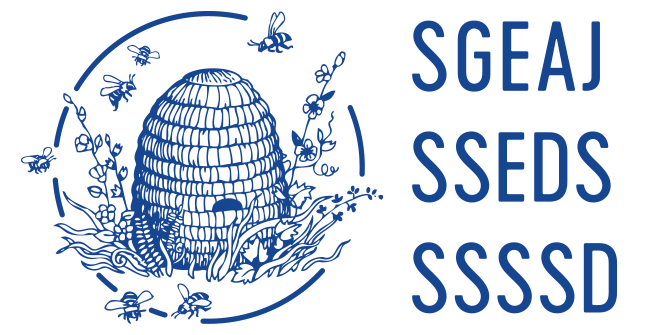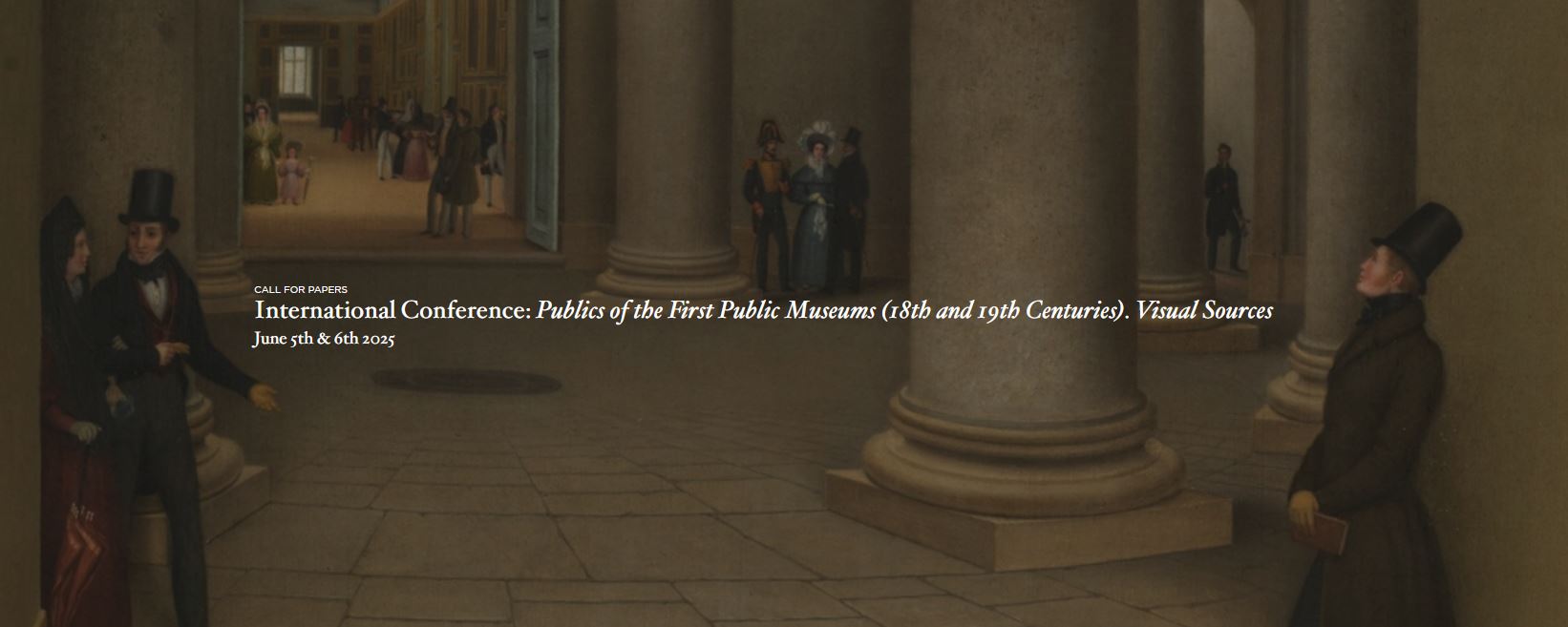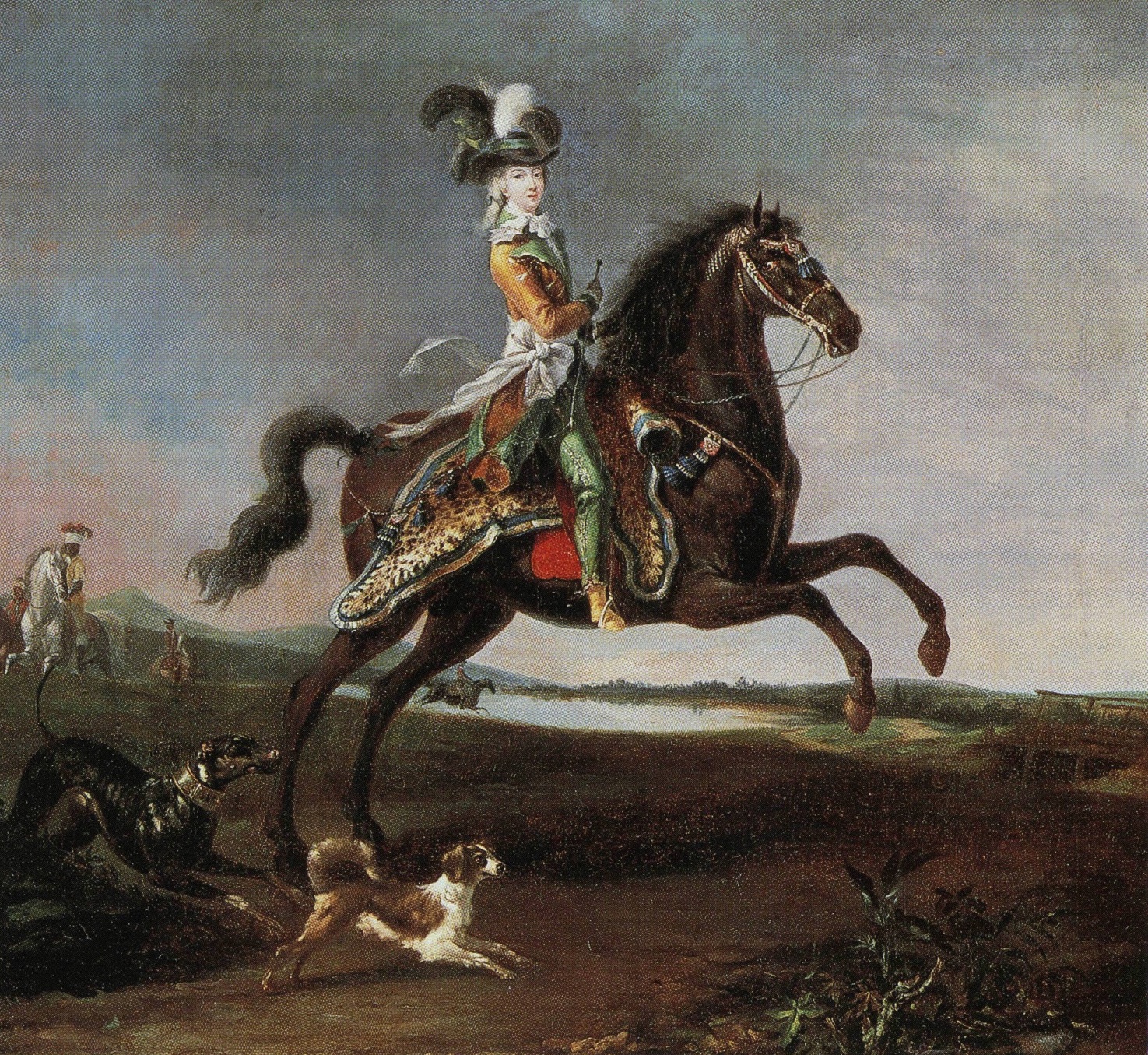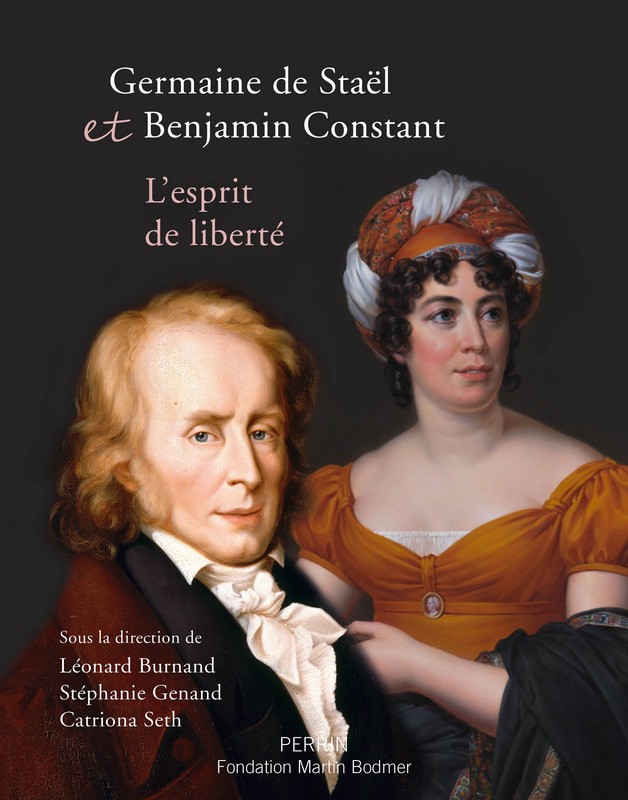Call for papers for the international conference „Publics of the First Museums (18th and 19th Centuries): Visual Sources“, organised by the Museo Nacional del Prado and the Università della Svizzera italiana, to be held in Madrid at the Museo Nacional del Prado, 5-6 June 2025. Deadline for submission: 20 January 2025.
The Conference entitled Publics of the First Public Museums (18th and 19th Centuries). Visual Sources is an integral part of the research project Visibility Reclaimed. Experiencing Rome’s First Public Museums (1733-1870). An Analysis of Public Audiences in a Transnational Perspective (FNS 100016_212922) directed by Carla Mazzarelli. Marking the third of three encounters (I. Institutional Sources; II. Literary Discourses), this workshop delves into the examination of visual sources, vital to understanding the forms of representation of early museums and their publics. We intend to investigate a vast range of visual sources, from views of internal and external spaces to architectural and display projects, from caricatures to illustrations published in catalogues, guidebooks, voyages pittoresques up to the (self)representation of publics, museum staff (directors, custodians, ciceroni) and artists within the museum.
Visual sources have long represented a privileged source for investigating the origins of the first public museums and the impact on their publics. However, in the light of recent studies aimed at deepening the material history of the museum and the encounter of the public with the institutions, these sources deserve a closer scrutiny in both methodological and critical terms. As museums sought to define and engage their publics, visual sources often became both a mirror and a mould; they reflect and shape institutional and societal perceptions, contributing to build up the idea of museum but also to give a depiction of practices of access to public and private collections in Europe and in the World. The Museo Nacional del Prado welcomes this initiative as it has been involved since its foundation in 1819 in the process that the Conference analyzes. The well known paintings that represent the spaces of Museo Nacional del Prado, since its opening, such as those of Fernando Brambilla, are an important starting and comparison point for the theme at the center of the Conference discussion.
On the other hand, paintings depicting ‚quadrerie‘ have been a codified genre at least since the 17th Century. Such artworks have also been read as sources for the study of the evolution of the display during the Early Modern Age, but they also represent reference models for artists on how to represent the interiors of museum spaces, their publics and staff.
In particular, the aim of the Conference at the Prado is therefore to answer the following questions:
- In what terms can visual sources be used as a starting point for a broader reflection on the definition and progressive evolution of the way of looking and experiencing the spaces of collecting and museums, increasingly opened to a general public from the late XVIIIth century?
- What kind of visual representations of the publics in museums are privileged by institutions at the origins of their foundation?
- When and how can we recognize forms of self-representation and/or visual promotion of museum, its spaces and its staff?
- What can the images depicting the spaces of collecting and the first public museums tell us about the evolution of visitor’s gaze and of their encounter with the institutions?
We welcome papers offering new insights on the following topics and materials:
- The role of artists and architects specialized in the genre of the ‘museum’ view (paintings and prints). In particular, we will appreciate specific insights not only into the backgrounds and careers of specific, lesser-known personalities, but also into the methods they developed to ‚portray‘ the museum and their audiences and any relationships they had with institutions.
- Architectural plans/sketches/drawings as a vehicle for the study of museography in relation to publics. From the drawing of ideal museums to the design of first public museums, we are interested in exploring how, through the study of published and unpublished graphic materials, we can reconstruct a history of museography for the public, at its origins.
- Facing each other: artists vs general publics. We are interested in investigating how the publics are represented in the first images depicting the museums, focusing in particular on the theme of the „encounter of the audiences“ and the interrogatives that may emerge regarding gender, identity and culture issues within the early museums. In this context we are also interested in the role of satire and caricatures and what they can tell about social reception of museums, their staff and audiences.
- The role of illustration in periodicals, guides, catalogues, novels and literature in general dedicated to the museum and the related topic of „Museums at Hand“ (maps, postcards, souvenirs, „portable museums“). We are interested in how visual narratives of the museum have been constructed to make it more accessible to the public. In particular, we encourage proposals on the relationship between visual and written narratives.
- The role of Early Photographs in/of the Museum. We are also interested in exploring how photography contributes to disseminating the image of the museum to a wider public but also the material history aspects of its use in the museum.
With a spotlight on interdisciplinary and transnational approaches, the Prado Conference calls for a deeper probe into the visual and material realms of museums, emphasizing the interplay between visual sources, literary discourses and artworks, collections, display, space, staff and audiences „narrated“ or „observed“ in the museum of the 18th and 19th centuries.
We aim to broaden the horizon by drawing parallels with analogous visual documentation from other cultural spaces that the project seeks to study in comparative terms. This includes libraries,academies, galleries, private collections, villas, both ancient and modern monuments, archaeological sites, places of worship, theatres, ateliers, and more.
Key points to consider are:
- To foster dialogue around the most recent research endeavors on the topic, we especially encourage submissions from doctoral candidates and early-career researchers, who are currently delving into original themes and sources resonant with the workshop’s objectives.
- Preference will be given to applications showcasing interdisciplinary research approaches. This encompasses the melding of Art and Architectural History with Material History, Literature, Intermedial Studies, Tourism Studies, Geography and beyond.
- Submissions emphasizing Digital Humanities are highly regarded. This includes, but is not limited to, cataloguing projects, databases concerning in particular to visual sources, the visiting experiences and audiences of the first public museum in comparisons with other institutions and places (e.g., libraries, academies, galleries, villas, ancient and modern monuments).
- We highly value case studies adopting transnational and/or transregional perspectives. Proposals exploring underrepresented geographies within the sphere of Museum Studies are particularly encouraged.
- The primary focus of this Conference is on the 18th and 19th centuries. However, topics on the 17th and the early 20th century are also welcome, provided they maintain a strong engagement with or connection to these two centuries.
- Please note that for the selected candidates on Call there is no registration fee but reimbursement for travel and accommodation is not included.
Contributors are invited to submit an abstract (max. 2,000 characters, including spaces) accompanied by a brief CV (max. 1,500 characters, including spaces) and a minimum of three keywords to: visibilityreclaimed@gmail.com. Application in English, French, Italian, and Spanish will be evaluated and communicated by the Conference Directors. The deadline for submitting abstracts is 20 January 2025, and applicants will be notified of their acceptance on 3 February 2025.
For further information about the conference, please visit the official website.





